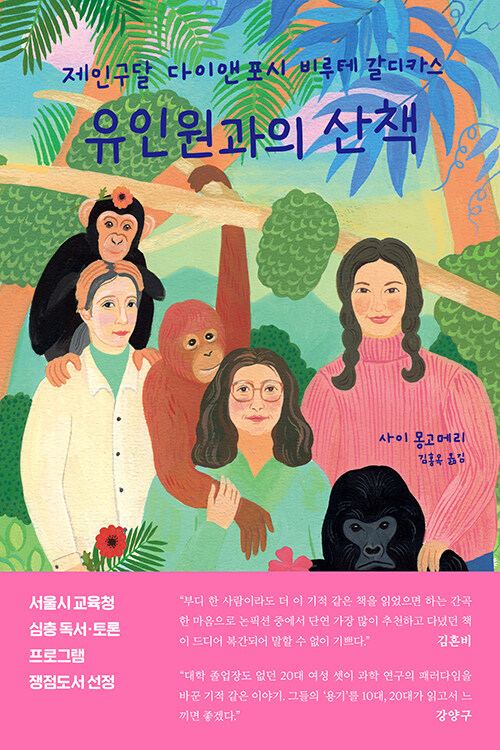
NoW
R U Next?, Audition for the Next Girl Group Kicks Off
Audition, TV Series, Book of the Week
2023.07.07
Credit
Article. Lee Yejin, Kang Ilkwon (RHYTHMER, Music Critic), Kim Gyeoul (Writer)
Design. Jeon Yurim
Photo Credit. BELIFT LAB
R U Next? (JTBC)
Lee Yejin: R U Next, an audition program to produce HYBE's next girl group act that will continue the legacy of LE SSERAFIM and NewJeans, places emphasis on “the criteria of being an elite idol group.” Contestants can make a debut after passing a total of seven rounds, each with certain criteria to be fulfilled, like “unique and distinct personality, an ability to handle a variety of concepts, and being an all-rounder on stage,” qualities cited by the current HYBE artists themselves. And the first round, or the “tryout,” makes contestants perform on stage in a unit of three to four they have been practicing together to have their individual levels assessed. Not only do they need to put on a great performance as a group, but must also compete with one another. The results can be emotionally jarring, but the contestants console and encourage each other behind the scenes. The program groups together contestants with similar levels of skills and assigns a song suited to each group. This approach ensures an even playing field, while showcasing what the future girl group may look like in various instances. Meanwhile, the program, inspired by “the coming-of-age genre,” aims to highlight the “distinct charms of the trainees under a human light to make each and every one of them appear special.” According to the production crew, they intended the show to be “a human documentary,” which is why the personal stories of the contestants are peppered throughout the show. This means that the seven rounds, or the criteria the contestants must fulfill to become the elite idol group, is also a journey through which the viewers will get to know the contestants of R U Next? as individuals. Then they will cast their votes, imagining what the next girl group following LE SSERAFIM and NewJeans will look like.
Wu-Tang: An American Saga
Kang Il Kwon (RHYTHMER, Music Critic): It’s still difficult to fully understand the culture of hip-hop, as it was born and developed under a very specific setting of the American slums. We may have to throw questions and find answers on hip-hop forever. It’s a music that feels both close and far, which makes it more fascinating. Fortunately, there are films, dramas, and documentaries on hip-hop. They’re excellent media to indirectly acquire cultural experiences and knowledge. A case in point is the TV series Wu-Tang: An American Saga. The show, which is on Hulu, an OTT streaming service primarily owned by The Walt Disney Company, follows the story of the legendary group Wu-Tang Clan. Joined by more than nine rappers, Wu-Tang appeared in the 1990s and changed the landscape of hip-hop by presenting unprecedentedly unique and innovative music. The series is full of behind-the-scenes episodes and detail how some of their most famous tracks were created. While some scenes have been embellished for dramatic entertainment, the show is based mostly on facts. The sequences visualizing the sampling process are particularly memorable (if you don't have time to watch the whole series, I suggest you look up these sequences on YouTube). Not only did it illustrate the story of the group in an intriguing way, it also offers a glimpse into the American slums and the rappers’ lives, while capturing the history and trends of hip-hop at the time. That’s why I strongly recommend this show. Recently (in April), the third and final season came to an end with a lot of praise, so there is no need to worry about the show fizzling out towards the end.
Walking with the Great Apes by Sy Montgomery
Kim Gyeoul (writer): Have you ever wondered why Jane Goodall is so famous? Sure, she’s known for her chimpanzee research, but why are the pictures she took with the chimpanzees such a big deal? Isn’t it only natural to have such pictures if you studied chimpanzees? The answer is no, and that is precisely why she is widely known.
The three women researchers selected by palaeoanthropologist Louis Leakey: Jane Goodall, Dian Fossey, Biruté Galdikas, who studied chimpanzees, mountain gorillas, and orangutans respectively, have forever changed the paradigm of primate research. Rather than researching their subjects through objective observational studies or controlled experiments, they approached them in their natural habitat as if they’re fellow humans and made close connections with them, thereby unveiling what they are. They began their research without any recognized Ph.D., but simply waited for their research subjects, observed them, exchanged eye contact, and recorded their lives. Despite having betrayed “the scientific methods,” they have all gained recognition as scientists. Because after all, who would say that their records weren’t science?
Sy Montgomery looks into these three great women who have completely changed the paradigm in their field of science, with the same attentiveness these scientists employed during their study of primates. Montgomery observes and tells the stories of their lives. A read that will bring you face-to-face with these four confident women.
Copyright © Weverse Magazine. All rights reserved.
Unauthorized reproduction and distribution prohibited.
Unauthorized reproduction and distribution prohibited.
